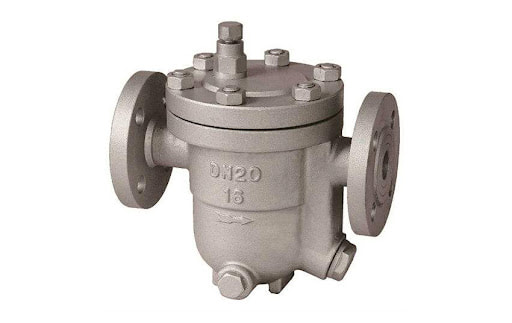How to Winterize a Trap?
The trap is also called a steam trap or a gas-blocking drain valve. It is a type of valve. It is an automatic valve. Its purpose is to automatically discharge the condensed water generated in steam pipes and heating equipment to ensure smooth flow of pipes and improve thermal efficiency. Therefore, it is also called a steam trap. As the weather turns colder, many factory pipelines, valves, and equipment may be frozen in extremely cold weather. So what are the anti-freeze and heat preservation measures for traps?

The function of drain valve
1. Reduce the consumption of the trap itself
The steam consumption of the steam trap itself generally refers to the consumption caused by steam leakage, or the amount of steam required when the steam trap operates, plus the loss of steam consumed in the heat dissipation process. Through the use of steam traps, major steam consumption can be effectively reduced, which is more conducive to the equipment's demand for steam in production.
2. Quickly discharge the air and low-temperature condensation water in the equipment when starting up
The trap can shorten the preheating operation time of the entire equipment and quickly discharge the air and low-temperature condensation water in the equipment. When steam is started to be supplied, the inside of the steam delivery pipeline is filled with air, which must be removed in time to successfully deliver steam. In addition, after the steam transportation pipeline or steam using equipment reaches a certain temperature, the initial low-temperature condensation water generated during the entire process must be quickly discharged from the equipment to ensure that the entire equipment can achieve normal operation.
3. Quickly drain the condensed water generated in the equipment during use
The use of drain valves can also quickly drain the condensed water generated in the equipment. This ensures that the entire steam equipment can be in optimal condition when used for heating, and prevents excess condensation water from remaining in the equipment. This ensures that the entire equipment maintains good heating efficiency to the greatest extent.
4. Energy saving and consumption reduction
We know that the enthalpy of saturated steam consists of "liquid heat" and "latent heat of vaporization", and the enthalpy of "latent heat of vaporization" accounts for 75% of the total enthalpy. Therefore, in industry, people always hope that the latent heat can be released first in the steam system and then Drain water, and the trap can block the direct discharge of steam, so the trap can achieve the purpose of saving energy by saving the conversion of heat in the steam system.
5. Prevent water hammer
When the steam system is running, the high-speed flowing steam pushes a large amount of condensed water, causing violent impacts and fluctuations on the pipe walls, valves and equipment. This phenomenon is called water hammer. When the water hammer reaches the bend of the pipeline and suddenly turns from high speed to stationary, all the kinetic energy will be released in the form of pressure to the pipe wall at the bend. If the speed of the water hammer is very fast or the amount of condensed water is large, the pipe will be damaged. Wall cracked. Even if the speed is slow or the mass is small, it will produce a lot of noise and vibration. In severe cases, the entire system will not be able to operate safely.
6. Improve heat exchange efficiency
Since non-condensable gas cannot be liquefied, air binding will occur on the pipe wall inside the equipment. The initial air in the pipe when starting up and some hot air during operation will greatly reduce the heat transfer efficiency of the steam, resulting in a loss of heat between the steam and the heated medium. The heat exchange capacity between them is significantly reduced. Therefore, condensed water and air in pipes or heat exchange equipment must be removed in time to improve heat exchange efficiency.
7. Prevent corrosion
The condensed water and air in the steam pipes and equipment will produce chemical reactions, which will cause corrosion in the steam pipes and equipment.
Antifreeze measures for drain valves
1. Keep the steam trap discharge line as short as possible.
2. Do not choose a steam trap that is too large.
3. Tilt the steam trap discharge line downward to speed up gravity discharge.
4. Insulate the steam trap discharge pipeline and condensate return pipeline.
5. If the return pipe is raised, the vertical discharge pipe should be adjacent to the discharge pipe on the upper part of the return header, and the discharge pipe and the steam trap discharge pipe should be insulated together.
6. When the condensate return pipeline is exposed to atmospheric conditions, adding a heating pipe should be considered.
Antifreeze protection selection and installation of appropriate steam traps As long as steam passes through, there will be no freezing problem. If the steam is cut off, the steam condensate will form a vacuum in the heat exchanger or trace pipe. This prevents condensation from draining freely from the system before freezing occurs.
155
0
0


Comments
All Comments (0)